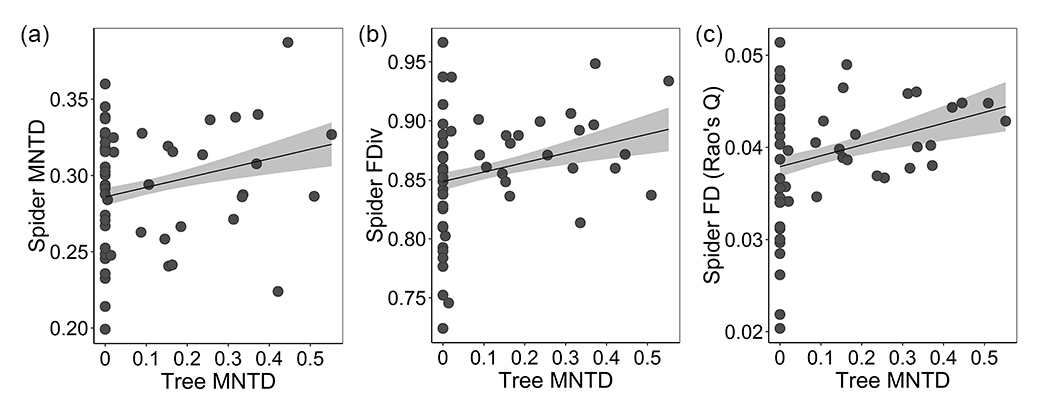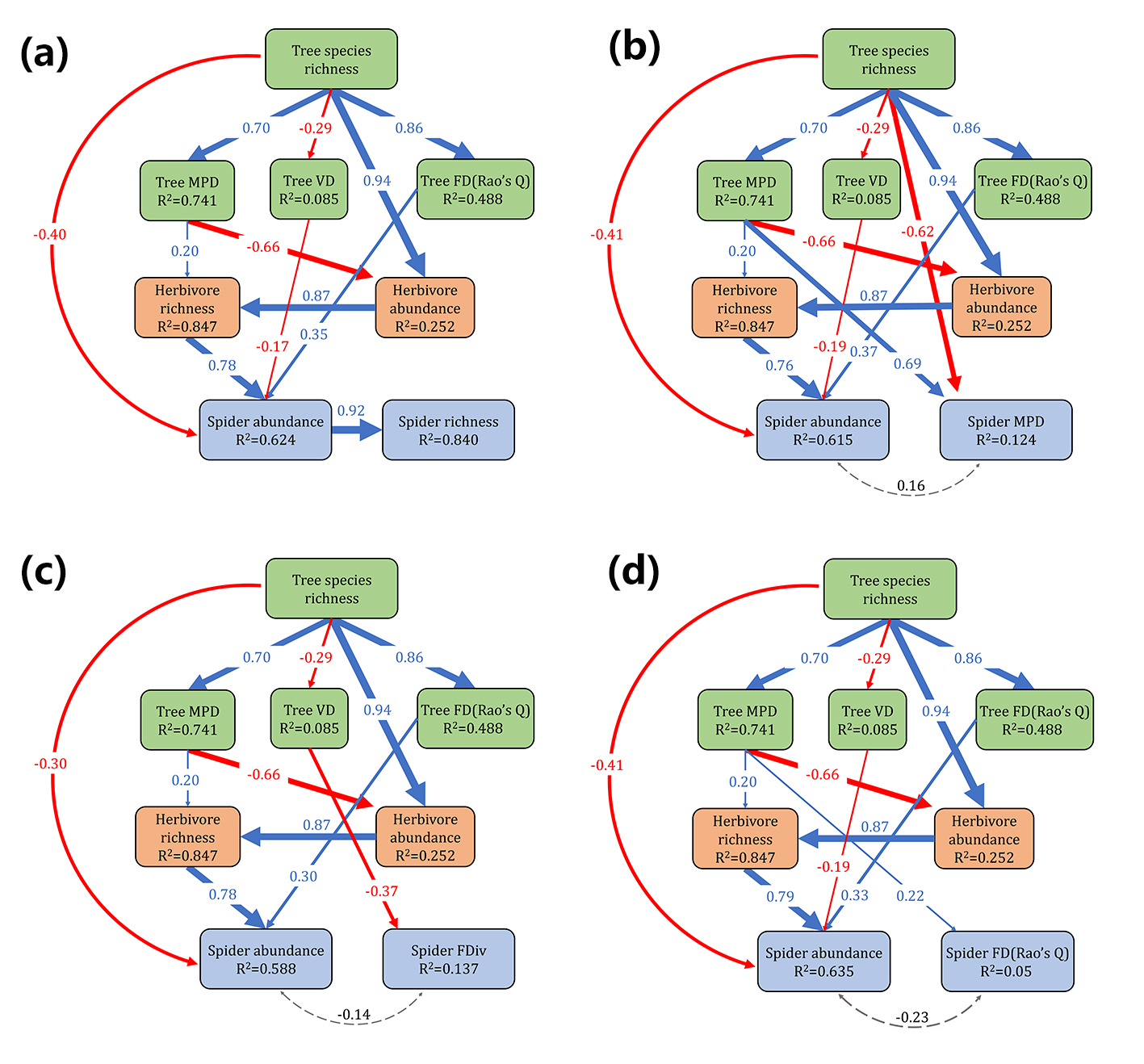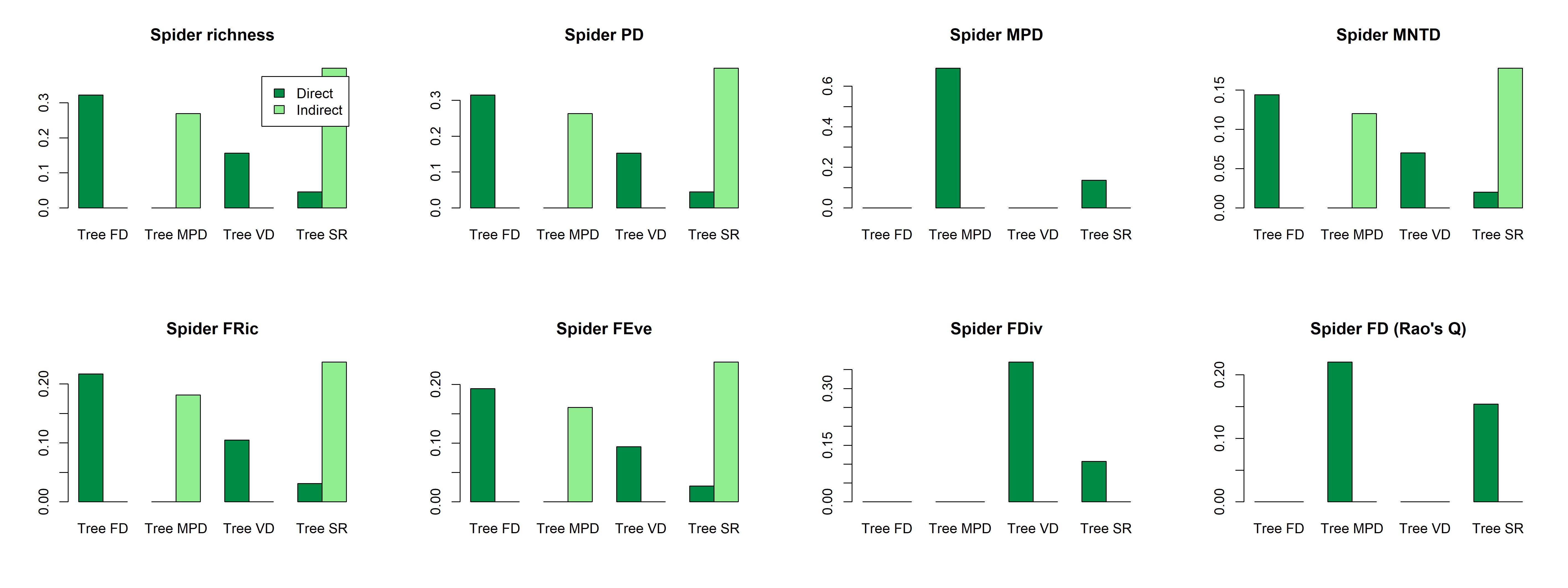Human-induced biodiversity loss is threatening ecosystem function. Previous studies has provided evidences that the biodiversity and ecosystem functions of consumers were affected by changes in plant diversity. However, we still lack a general understanding of the interactive effects of biodiversity change across trophic levels.
The members from Chao-Dong Zhu’s Lab sampled arboreal spiders and lepidopteran larvae across seasons in two years in the subtropical tree diversity experiment, and then disentangled the links between tree diversity and arthropod predator diversity by deconstructing the pathways among multiple components of diversity (taxonomic, phylogenetic and functional) with structural equation models. They found that herbivores were major mediators of tree species richness effects on abundance, species richness, functional and phylogenetic diversity of predators (Fig. 3), while phylogenetic, functional and structural diversity of trees were also important mediators of this process (Fig. 1, Fig. 2). However, the strength and direction differed between functional, structural and phylogenetic diversity effects (Fig. 4), indicating different underlying mechanisms for predator community assembly. Abundance and multiple diversity components of predators were consistently affected by tree functional diversity, indicating that the variation of structure and environment caused by plant functional composition might play key roles in predator community assembly.

Fig. 1. Relationship between tree functional diversity and (a) abundance, and (b) PD, and (c) MNTD, and (d) FRic of spiders. The significant relationship is shown by a regression line (with 95% confidence bands).

Fig. 2. Relationship between mean nearest taxon distance (MNTD) of tree and (a) MNTD, (b) functional divergence (FDiv), and (c) FD (Rao’s Q) of spiders. The significant relationship is shown by regression line (with 95% confidence bands).

Fig. 3. Path model of effects of tree species richness, tree phylogenetic diversity, tree functional diversity, herbivore abundance and herbivore diversity on abundance, (a) species richness, (b) MPD, (c) FDiv, (d) FD Rao’s Q of spiders.

Fig. 4. Direct and indirect of plant diversity on predator diversity. The summed effects of tree species richness (Tree SR), phylogenetic diversity (Tree MPD) and functional diversity (Tree FD) on spider species richness, phylogenetic diversity (PD, MPD and MNTD) and functional diversity (FRic, FEve, FDiv and FD Rao’s Q), obtained from the path models in Fig. 3 and Fig. S7, are shown in bars.
This study was supported by the Strategic Priority Research Program of the Chinese Academy of Sciences (XDB310304), the National Natural Science Foundation, China (32100343) and the National Science Fund for Distinguished Young Scholars (31625024).
Chinese report: https://mp.weixin.qq.com/s/w7YEslDXXSzwNn6_EDhlFg
Literature:
Jingting Chen, Mingqiang Wang*, Yi Li, Douglas Chesters, Arong Luo, Wei Zhang, Pengfei Guo, Shikun Guo, Qingsong Zhou, Keping Ma, Goddert von Oheimb, Matthias Kunz, Naili Zhang, Xiaojuan Liu, Helge Bruelheide, Andreas Schuldt, Chaodong Zhu*. 2023. Functional and phylogenetic relationships link predators to plant diversity via trophic and non-trophic pathways. Proceedings of the Royal Society B-Biological Sciences. 290(1990): 20221658. https://doi.org/10.1098/rspb.2022.16.

